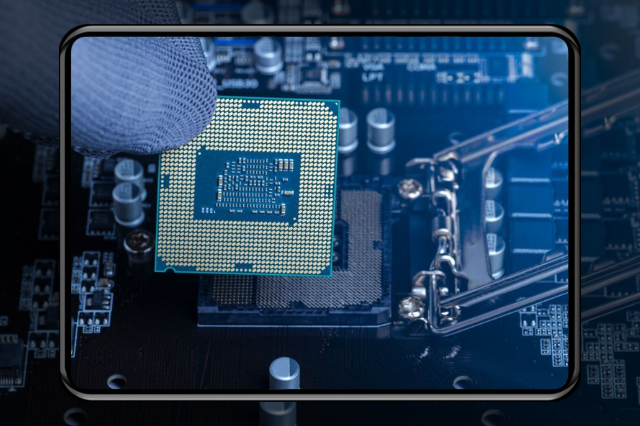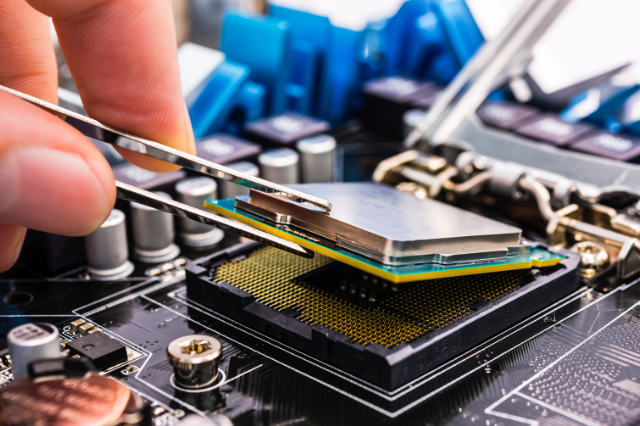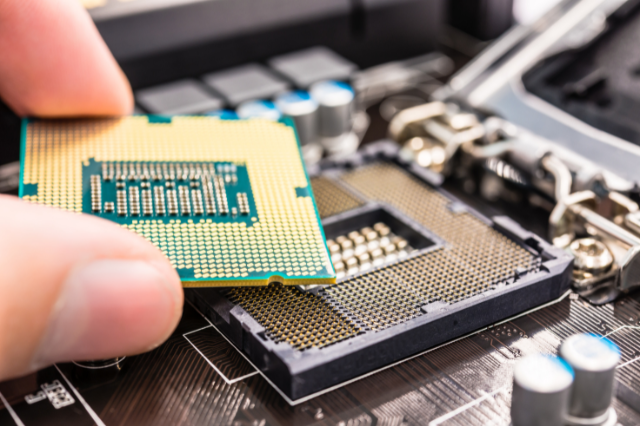
loading...

VLSI design technology has advanced rapidly in recent years. This has led to the development of a widerange of electronic devices, from smartphones and tablets to computers and servers. Let’s understand it in detail!
What is VLSI Design technology?
VLSI stands for Very Large-Scale Integration. In this technology, electronic circuits and systems are designed and integrated into a single chip. It involves the use of computer-aided design (CAD) tools and techniques to design and simulate the behavior of electronic circuits at the transistor level.
The VLSI design plays a critical role in the development of electronic devices. Using such technology, complex and advanced systems can be designed that are more powerful, more energy efficient, and more effective. In a VLSI design course, you will get to understand all these concepts.
VLSI (Very Large-Scale Integration) design technology is constantly evolving, with new trends emerging to meet the demands of emerging applications and technologies. Here's an introduction to some of its latest trends:
More advanced manufacturing processes
As the demand for more powerful and energy-efficient chips continues to increase, manufacturers are using advanced manufacturing processes to create smaller and more complex circuits. FinFET (Fin Field Effect Transistor) technology is one such development, which allows for better control over the flow of current and reduces power leakage. Another technology, 3D ICs (Integrated Circuits), stacks multiple layers of circuits on top of each other, allowing for greater circuit density and reduced interconnect length. EUV (Extreme Ultraviolet) lithography, which uses shorter wavelengths of light, allows for more precise pattern creation and smaller features.
Increased use of Artificial Intelligence
Artificial Intelligence (AI) is being used to optimize VLSI design, reduce power consumption, and speed up verification. The development of AI-assisted design flow with machine learning algorithms helps to predict chip performance. By automatically adjusting voltage levels and clock frequencies, artificial intelligence also optimizes power consumption. The use of AI can also speed up the verification process, which reduces the need for manual testing.
The growing importance of low-power design
As mobile devices and Internet of Things (IoT) devices become more prevalent, low-power design is becoming increasingly important. Power consumption can be reduced by using techniques like Dynamic Voltage and Frequency Scaling (DVFS), which adjusts the voltage and frequency based on the chip's workload, and power gating, which turns off unused components of the chip. To further reduce power consumption, advanced power management techniques are also being developed.
Increased use of advanced packaging
Advanced packaging is being used to improve chip performance and reduce form factor. 3D packaging stacks multiple dies on top of each other, allowing for greater functionality in a smaller package. The use of chipsets, which are individual components of a chip, has enabled manufacturers to create scalable and flexible designs. It improves power efficiency and performance by packaging a wafer of chips into a single package.
Greater focus on security
As the number of connected devices grow, there is a growing need for secure chips. The purpose of hardware security modules (HSM) is to protect sensitive data and carry out cryptographic operations via dedicated security chips. A secure enclave is also used to execute code in a secure environment. The hardware-based root of trust and secure boot is used to ensure that the chip is running legitimate software. All of this will be a part of VLSI design.
These new trends in VLSI design technology are aimed at creating more powerful, efficient, and secure chips that can meet the demands of emerging technologies such as IoT, AI, and 5G.
Stay updated with VLSI Design trends with the FutureWiz VLSI course!
VLSI (Very Large-Scale Integration) Design is a rapidly growing field. Therefore, the demand for skilled VLSI Design engineers is continuously increasing.
FutureWiz VLSI Design course provides students with the skills and knowledge they need to enter this exciting field. It covers a range of topics, including digital and analog circuit design, ASIC and FPGA design, verification, and testing. In addition to these technical skills, we also cover topics such as project management, communication skills, and teamwork.
Enroll in our VLSI course online and get the opportunity to learn from experienced professionals in the field.
 A to Z on India, Japan & the Future of Semiconductor Industry: A New Chapter in Tech Collaboration
A to Z on India, Japan & the Future of Semiconductor Industry: A New Chapter in Tech Collaboration
 RTL Design vs Physical Design: What's the Real Difference?
RTL Design vs Physical Design: What's the Real Difference?
 The Future of the Semiconductor Industry: What Indian Students Should Know
The Future of the Semiconductor Industry: What Indian Students Should Know
 Top 7 Career Paths After Completing a VLSI Course
Top 7 Career Paths After Completing a VLSI Course
 Best Time Management Tips for Students Preparing for VLSI Careers
Best Time Management Tips for Students Preparing for VLSI Careers
 Mastering VLSI Physical Design: A Comprehensive Course Overview
Mastering VLSI Physical Design: A Comprehensive Course Overview
 The Complete FPGA and ASIC Guide
The Complete FPGA and ASIC Guide
 Verilog Essentials: Mastering the Fundamentals of Hardware Description Language
Verilog Essentials: Mastering the Fundamentals of Hardware Description Language
 Unleashing the Power of System Verilog: A Comprehensive Guide for Aspiring Designers
Unleashing the Power of System Verilog: A Comprehensive Guide for Aspiring Designers
 Demystifying VLSI chip Design: Exploring the Core Concepts of VLSI Courses
Demystifying VLSI chip Design: Exploring the Core Concepts of VLSI Courses
 Basics of VLSI - An Ultimate Guide
Basics of VLSI - An Ultimate Guide
 Career Prospects After Completing A VLSI Course
Career Prospects After Completing A VLSI Course
 Top 5 Reasons To Take Up A Professional VLSI Course
Top 5 Reasons To Take Up A Professional VLSI Course
 Mastering VLSI Design: A Comprehensive Guide To Understanding Complex Integrated Circuits
Mastering VLSI Design: A Comprehensive Guide To Understanding Complex Integrated Circuits
 Future-Proof Your Career With A VLSI Course: How Learning About Integrated Circuits Can Boost Your Job Prospects?
Future-Proof Your Career With A VLSI Course: How Learning About Integrated Circuits Can Boost Your Job Prospects?
 System Verilog: An Overview
System Verilog: An Overview
 Introduction to Hardware Description Language (HDL)
Introduction to Hardware Description Language (HDL)
 Unlock The Potential Of VLSI Design With An Integrated VLSI Course Online
Unlock The Potential Of VLSI Design With An Integrated VLSI Course Online
 Universal Verification Methodology:An Efficient Verification Approach
Universal Verification Methodology:An Efficient Verification Approach
 How to Write a Verilog Module for Design and Testbench
How to Write a Verilog Module for Design and Testbench




